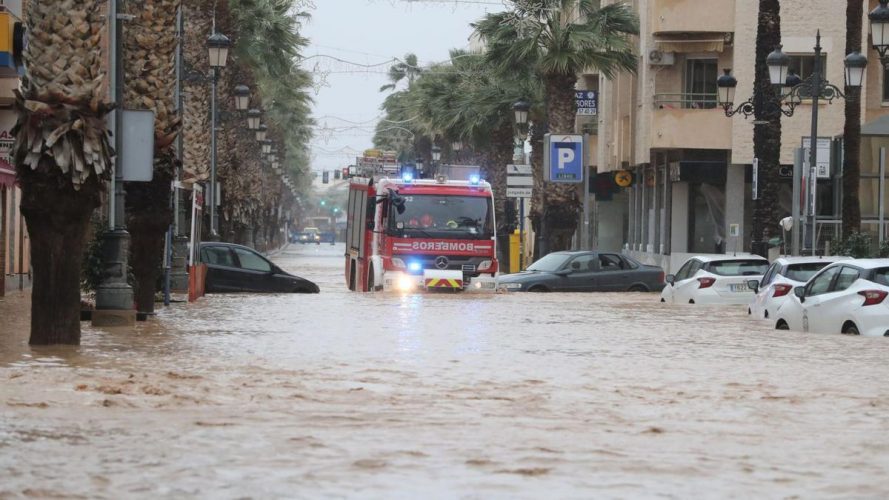DANA is the acronym for isolated depression at high levels, it is a Non-Tropical Altitude Depression, a phenomenon that is also known as “cold drop” in other places, but which in the Mediterranean Sea area has special characteristics. And unfortunately because of the climate change its frequency has increased. So almost every year we come across one or two.
The Iberian Peninsula is the area of Europe where DANA phenomena occur most frequently. The most terrible occurred in September 2019, but there have also been other events that have left great damage and taken human lives. To better understand this climatic singularity we will tell you the four pillars of a DANA.
What is a DANA?
DANA It is an isolated depression at high levels of the atmosphere and that specifically forms in the Mediterranean region of the Iberian Peninsula. Although it is colloquially called “cold drop”, it is important to note that this term refers to the consequences of the phenomenon rather than its nature. The DANA It is characterized by a drastic change in atmospheric pressure levels, causing torrential rains, strong winds and storms.
How is a DANA formed?
The formation of a DANA It depends on some specific weather conditions. First of all, the air in the jet stream must flow in such a way that it forms ridges. Then, a drop in atmospheric pressure causes these air currents to spread southward.
This combination of factors creates an isolated high-altitude depression, characteristic of a DANA. The phenomenon is usually accompanied by a high pressure ridge to the north, which creates favorable conditions for its development. Subsequently, an abundance of precipitation is discharged that can be accompanied by thunderstorms and even hail. And in winter times it can sleet or snow.
Where and when does DANA occur?
This phenomenon occurs mainly in autumn, although not exclusively on these dates. This is due to the interaction that occurs between the polar air coming from the north and the warm, humid air generated in the south, over the Mediterranean Sea. It is important to clarify that a DANA It is not always associated with harmful or adverse weather phenomena.
The Mediterranean is the region most prone to suffering from this type of phenomena, since it is an area prone to the formation of air masses with high levels of humidity and warmth. When these encounter the frozen air of the stratosphere, the reaction can be very violent. And it not only occurs in coastal areas, but historically the country has suffered these phenomena in areas far from the coast.
Historically, Spain has suffered from floods linked to DANA since the 19th century. There is no doubt that the frequency of these phenomena has skyrocketed since the end of the last century. Something that experts link with the global warming of anthropogenic origin.
What consequences can a DANA have?
The effects of a DANA They can be serious or very serious for the affected regions. Cities are often not prepared to handle such abundant rainfall in such a short time.
We are talking about large amounts of water that fall in some areas such as Almería and Murcia that are in the process of desertification, This implies that their soils are degraded and do not absorb the water that falls. The water then seeks the most natural channels possible and ends up destroying everything in its path.
The resulting floods and floods linked to the DANA can cause significant damage. Its catastrophic consequences have had high costs, economically and sometimes, unfortunately, also in human lives.

